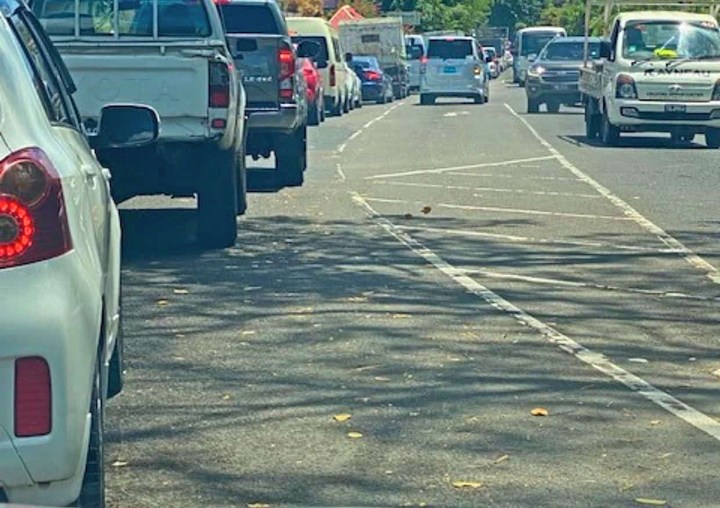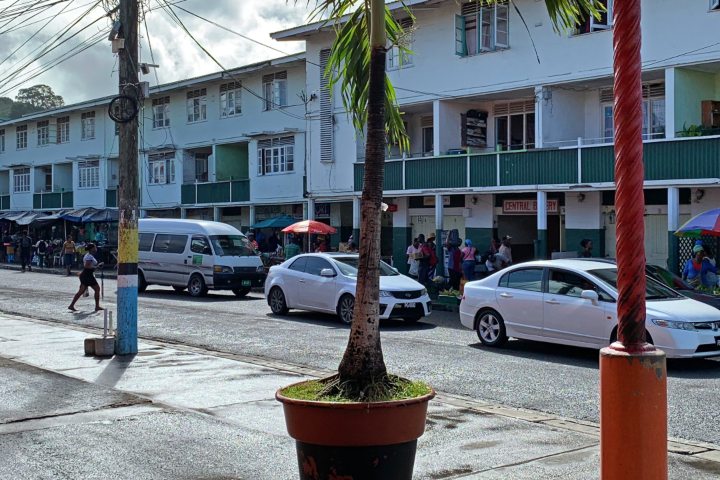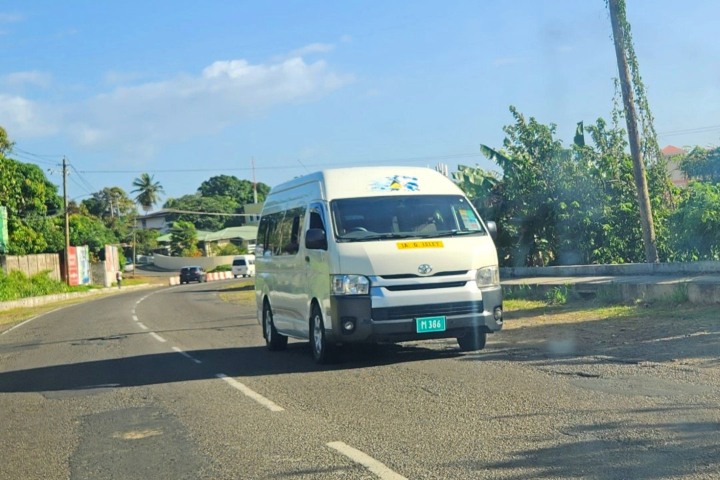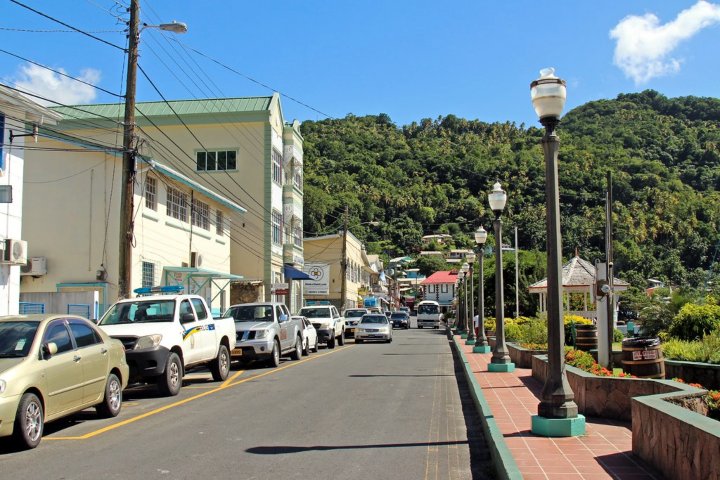Imagine cruising along the scenic coastal roads of St. Lucia, the wind in your hair, the sun on your face, and the freedom to explore this Caribbean gem at your own pace. Sounds idyllic, right? But if you’re a foreigner planning a trip to St. Lucia, you might be wondering, “Can I even drive there?” The answer is yes, but there are a few things you need to know before you hit the road.
Driving Legalities: What You Need to Know
Before you pack your bags and book that rental car, let’s talk about the legal requirements for driving in St. Lucia. Here’s the good news: if you have a valid driver’s license from your home country, you’re generally allowed to drive in St. Lucia. However, local police might ask to see an International Driving Permit (IDP) along with your driver’s license and proof of identity. So, it’s always a good idea to have both just in case.
Think of an IDP as a handy translation of your driver’s license, making it easier for authorities in St. Lucia to understand your driving credentials. It’s recognized in over 150 countries, including St. Lucia. Getting an IDP is a pretty straightforward process. You can apply online, upload a copy of your driver’s license, provide a passport-sized photo, pay a fee, and voila – you’re good to go!
Now, if you don’t have an IDP, no worries! You can obtain a temporary permit in St. Lucia. You can get one at the airport immigration desk, any local police station, or even through your car rental company. It’ll cost you USD $20 (XCD $54) and is valid for three months.
Getting Ready for the Road: A Look at St. Lucian Driving Conditions
Okay, you’ve got your documents sorted. Now, let’s get you acquainted with the unique driving conditions in St. Lucia. First things first: they drive on the left side of the road in St. Lucia. If you’re coming from a country where you drive on the right, this might take some getting used to. Don’t worry; it’s like learning a new dance step. You’ll get the hang of it! My advice? If you’re a bit apprehensive about driving on the left, start by taking taxis and observing the traffic flow. Once you feel a little more comfortable, you can try practicing in less busy areas before venturing out onto the main roads.
Now, let’s talk about the roads themselves. St. Lucia’s roads are known for being narrow and winding, with steep inclines and sharp turns. Imagine yourself navigating a scenic roller coaster – that’s kind of what driving in St. Lucia feels like. You’ll encounter potholes and bumps along the way, especially on the less maintained roads. Most main roads are paved, but if you decide to explore those off-the-beaten-path “back roads” or shortcuts, you might find yourself bumping along on unpaved terrain.
To help you visualize the road conditions in different parts of the island, here’s a quick rundown:
- North: The north boasts a four-lane highway and generally has roads in better condition compared to other areas.
- East Coast: If you prefer less narrow and winding roads, stick to the east coast. It’s also a safer option when it’s raining.
- West Coast: Prepare for a thrilling ride on the west coast, where you’ll experience steep inclines, declines, and winding roads with fewer guardrails. The views are breathtaking, but the drive can be a bit more challenging, especially at night due to limited street lights.
Navigating the Flow: Traffic, Local Driving Habits, and Unexpected Encounters

Now that you have a sense of the roads themselves, let’s talk about what it’s actually like to drive in St. Lucia, considering traffic flow, local driving customs, and some unexpected encounters you might have along the way. The north of the island, being the commercial hub, is where you’ll encounter the most traffic, especially during rush hours (7:15 am to 8:30 am and 4:15 pm to 6:00 pm). Even with the convenience of a four-lane highway, traffic can get congested, and if an accident happens, you might find yourself stuck for a while due to limited exits.
One thing you’ll quickly notice is that St. Lucians use their horns…a lot. But don’t take it personally! It’s not necessarily a sign of aggression; it’s more of a way to communicate on the road, whether it’s to signal a passing maneuver or simply to say hello.
You’ll also want to keep an eye out for minibuses, the primary mode of public transportation in St. Lucia. While they’re a convenient option for locals, minibus drivers tend to be a bit more…assertive, let’s say. They might pull out suddenly or stop without much warning to pick up or drop off passengers, so stay alert!
And speaking of unexpected encounters, be prepared to share the road with some four-legged friends. Animals, both domesticated and wild, are known to wander onto the roads, particularly in rural areas. So, keep a lookout for cows, horses, goats, sheep, and even stray dogs and cats.
Staying Safe on the Road: Essential Tips for Driving in St. Lucia

Driving in St. Lucia can be an adventure, but like any adventure, it’s essential to prioritize safety. So, before you set off on your island road trip, let’s go over some crucial tips to help you stay safe and make the most of your driving experience.
Buckle Up and Secure the Little Ones:
First and foremost, always wear your seat belt, and make sure all passengers do the same. This is a basic safety rule that applies everywhere, including St. Lucia. If you’re traveling with children under 7 years old, ensure they’re properly secured in appropriate child seats. Rental companies typically offer child seats, so be sure to inquire about them when booking your vehicle.
Sober Driving is a Must:
This should go without saying, but driving under the influence of alcohol or drugs is strictly prohibited in St. Lucia and is a serious offense with severe consequences. So, if you plan on indulging in some local rum punch or other alcoholic beverages, make sure you have a designated driver or opt for a taxi or other transportation options.
Hands on the Wheel, Phone Away:
Just like in many other countries, using your cell phone while driving is illegal in St. Lucia. It’s a major distraction and can put you and others at risk. If you need to make a call or check your phone, pull off the road to a safe location first.
Navigating with Caution:
Remember those roundabouts we mentioned earlier? When approaching a roundabout, always yield to vehicles already in the roundabout, particularly those coming from your right.
Sticking to the main roads is generally a good idea, especially if you’re not familiar with the area. Back roads and shortcuts might be tempting, but they can be poorly maintained and less safe, especially at night. If you’re unsure about a particular route, it’s best to ask a local or use a reliable navigation app.
Be Aware of Blind Spots:
Those winding roads with lush vegetation can create blind spots, making it difficult to see oncoming traffic. Approach blind bends with caution and use your horn to signal your presence. And remember those minibus drivers? Be prepared for them to stop suddenly, so maintain a safe following distance.
Parking Smarts:
When parking your car, choose well-lit areas whenever possible, and avoid leaving any valuables in plain sight. This helps deter potential theft and keeps your belongings safe.
Extra Tips for a Smoother Ride:
- Consider renting a 4×4 vehicle: If you’re planning to explore more rugged terrain or venture off the beaten path, a 4×4 will provide a more comfortable and capable driving experience.
- Choose a reputable car rental agency: Do some research and select a rental company with good reviews and a solid reputation.
- Inspect the rental car thoroughly: Before you drive off, take the time to check the vehicle for any existing damage, and make sure all lights, brakes, and other essential components are working properly.
Driving in St. Lucia can be a rewarding way to discover the island’s hidden gems at your own pace, but it also demands responsibility and awareness. By following these safety tips and being mindful of the local driving conditions, you can have a safe and enjoyable journey.
Weighing Your Options: Driving vs. Other Transportation

So, you’ve got the lowdown on driving in St. Lucia, but before you make your final decision, let’s consider some alternative transportation options and weigh the pros and cons of each.
Taxi Services:
Taxis are readily available throughout St. Lucia, particularly around tourist areas and airports. They can be a convenient option, especially for shorter trips or if you’re not comfortable driving on the island’s roads. However, taxis can be quite expensive, especially for longer distances. A taxi from the Hewanorra International Airport in the south of St. Lucia to a resort in the north can cost up to $100 USD.
- Pros: Convenient, readily available, no need to navigate unfamiliar roads.
- Cons: Can be expensive, especially for longer trips.
Private Drivers:
Hiring a private driver is a popular choice for those who want the flexibility of having their own transportation without the stress of driving themselves. You can find private drivers through recommendations, online forums (like the Reddit thread you provided!), or even by asking your hotel or resort for referrals.
- Pros: More personalized experience, can customize your itinerary, driver can provide local insights and recommendations.
- Cons: Can be more expensive than taxis, especially for multiple trips or extended periods.
Public Transportation (Minibuses):
Minibuses are the main form of public transportation in St. Lucia, and they’re a relatively affordable way to get around. They run along set routes, connecting towns and villages across the island.
- Pros: Affordable, a good way to experience local life.
- Cons: Can be crowded and uncomfortable, routes might not cover all destinations, might not operate on a strict schedule.
Excursions and Tours:
If you’re primarily interested in visiting specific tourist attractions or exploring different parts of the island, organized excursions and tours can be a great option. These typically include transportation, guide services, and sometimes even meals or activities.
- Pros: Hassle-free, well-organized, opportunity to learn from experienced guides.
- Cons: Less flexibility to explore at your own pace, might not cover all destinations you’re interested in.
Making the Choice:
Ultimately, the best transportation option for you will depend on your budget, travel style, and preferences. If you value flexibility and independence, renting a car might be the way to go. If you prefer a more relaxed and guided experience, taxis, private drivers, or organized tours might be better suited for you.
Remember to factor in the cost of each option, especially if you’re on a tight budget. Taxis and private drivers can add up quickly, while renting a car requires additional expenses like fuel and insurance. Consider the distances you’ll be traveling and the number of trips you plan to make.
The Final Verdict: To Drive or Not to Drive in St. Lucia?
After considering the various aspects of driving and alternative transportation options in St. Lucia, let’s summarize the key factors to help you make an informed decision about whether renting a car is the right choice for your trip.
Factors Favoring Renting a Car:
- Freedom and Flexibility: Renting a car gives you the freedom to explore the island at your own pace, venture off the beaten path, and discover hidden gems that might not be accessible by other means. You’re not bound by fixed schedules or routes, allowing for spontaneous adventures and detours along the way.
- Cost-Effectiveness for Frequent Exploration: While renting a car involves expenses like fuel and insurance, it can be more cost-effective than relying on taxis or private drivers, especially if you plan on making multiple trips or exploring different parts of the island extensively.
- Access to Remote Areas: Having your own vehicle allows you to reach more remote destinations, including secluded beaches, hiking trails, or local communities, that might not be easily accessible by public transportation or organized tours.
Factors Against Renting a Car:
- Driving Challenges: St. Lucia’s roads can be narrow, winding, and poorly maintained, presenting challenges for drivers unaccustomed to such conditions. Driving on the left side of the road, navigating steep inclines and sharp turns, and encountering potholes and unexpected obstacles can be stressful, especially for less experienced drivers.
- Local Driving Habits: Minibus drivers are known for their assertive driving style, which can be unpredictable and potentially hazardous for other drivers on the road. The frequent use of horns as a communication tool might also take some getting used to.
- Alternative Transportation Options: St. Lucia offers a range of alternative transportation options, including taxis, private drivers, public minibuses, and organized tours, which can be more convenient and less stressful for those who prefer not to drive themselves.
Making Your Decision:
Consider your personal comfort level with driving in challenging conditions, your budget, your travel style, and the specific destinations you plan to visit. If you’re confident in your driving abilities, enjoy exploring independently, and are willing to navigate St. Lucia’s unique road conditions, renting a car can be a rewarding experience.
However, if you’re hesitant about driving in a foreign country, prefer a more relaxed and guided experience, or are primarily interested in visiting popular tourist attractions, alternative transportation options might be a better fit.
Ultimately, the choice is yours. Weigh the pros and cons carefully, consider your individual needs and preferences, and choose the transportation method that best aligns with your vision for your St. Lucian adventure.
FAQ: Driving in St. Lucia
Q: What side of the road do people drive on in St. Lucia?
A: In St. Lucia, driving is on the left side of the road, similar to England. This might require some adjustment if you’re accustomed to driving on the right.
Q: Do I need an International Driving Permit (IDP) to drive in St. Lucia?
A: While an IDP is not strictly required, it is highly recommended for tourists. An IDP serves as an officially recognized translation of your driver’s license and can be helpful in various situations, such as interactions with local authorities or car rental agencies. You can easily apply for an IDP online.
Q: Can I use my US/Canadian/UK driver’s license in St. Lucia?
A: Yes, most visitors can drive in St. Lucia using their home country driver’s license. However, it’s best to carry an IDP along with your original license for added assurance and easier communication.
Q: Do I need a local driving permit in St. Lucia?
A: If you have an IDP that has been stamped at immigration upon arrival, you don’t need a separate local permit. However, without an IDP, you’ll need to obtain a temporary local permit from the airport immigration desk, a police station, or a car rental company. This permit costs USD $20 (XCD $54) and is valid for three months.
Q: What is the minimum age to rent a car in St. Lucia?
A: The minimum age to rent a car in St. Lucia is 25 years old, and you must have at least five years of driving experience. Some rental companies might have additional requirements, so it’s best to check their specific policies.
Q: What are the speed limits in St. Lucia?
A: Speed limits are posted in miles per hour (mph) and are generally as follows: * Cities: 10-15 mph * Residential areas: 30 mph * Highways: 40 mph
Q: What are the roads like in St. Lucia?
A: Road conditions in St. Lucia can be challenging. You’ll encounter narrow, winding roads, steep inclines and declines, sharp turns, and potholes. While main roads are paved, some roads, especially in rural areas, might be unpaved. The roads in the north are generally in better condition due to the higher concentration of urban areas and infrastructure.
Q: What should I be aware of regarding local driving habits?
A: Minibus drivers tend to be assertive in their driving style, often stopping or pulling out suddenly. Be prepared for frequent horn use, which serves as a form of communication rather than aggression. You’ll also need to be watchful for animals on the roads, particularly in rural areas.
Q: What are the parking options like in St. Lucia?
A: Parking is generally available throughout the island, but some areas have restrictions on certain days or times. Pay attention to parking signs and road markings to avoid any violations. In Castries and Rodney Bay, there are dedicated parking facilities.
Q: What should I do if I get into an accident?
A: Immediately contact the car rental company and follow their instructions. Legally, all accidents must be reported within 24 hours. Do not admit liability at the scene.
Q: What are the emergency numbers in St. Lucia?
A: * Police: 999 * Ambulance: 911 * Fire Service: 911
Q: Is it safe to drive at night in St. Lucia?
A: While driving at night is possible, it’s generally advisable to exercise extra caution due to limited street lighting, particularly in rural areas, and potential hazards like potholes and animals on the roads. If you’re unfamiliar with the area, it’s best to avoid driving at night.
Q: Are GPS devices or navigation apps reliable in St. Lucia?
A: While GPS and navigation apps can be helpful, not all roads, especially in rural or less developed areas, might be accurately mapped. It’s recommended to have a physical map as a backup and to rely on local knowledge or directions when in doubt.
Q: What are the fuel costs in St. Lucia?
A: Gas and diesel prices range from XCD $10 to $15 per gallon.
Q: Are gas stations open 24/7?
A: No, gas stations in St. Lucia generally have varying closing times. It’s best to refuel during the day, and be sure to fill up the day before if a holiday is approaching, as many stations might have limited hours or be closed.


